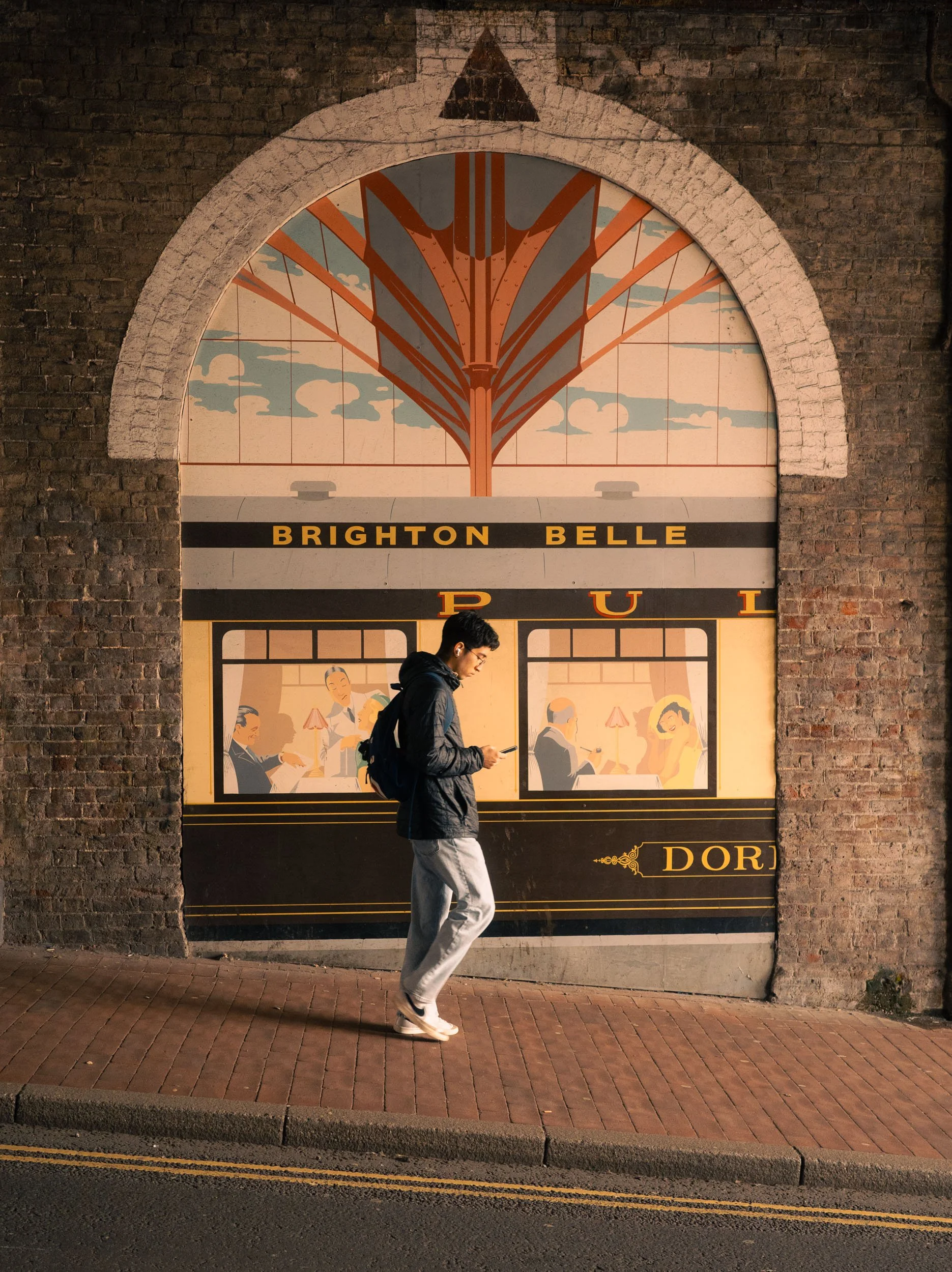Elevate Your Street Photography: Unconventional Composition Techniques to Stand Out
Get ready to take your street photography to the next level with some unconventional street photography techniques. It’s time to shake things up and explore unique composition methods that will enhance your street photography repertoire. In this blog post, we’ll dive into creative ways to frame your subjects and create compelling street photos that add depth, meaning, and make your photos stand out from the crowd. Let’s jump straight in.
Embrace Obstruction for Depth and Intrigue
Shooting Through and Around Objects
First on our list is Obstruction. Yes, you heard that right! Shoot through or around objects like windows, fences, or foliage to partially obscure your subject. This technique adds layers of depth to your images, creating intrigue and making viewers curious about what’s beyond the obstruction.
Practical Examples and Tips
From my own experience, this technique is easier than it sounds. Try shooting through shop windows, metal grates, or railings. Market stalls with hanging clothes can act as barriers, and window displays offer interesting artifacts and reflections. Start simple by firing the camera through a window, then gradually work up to more complex compositions, such as shooting through foliage or past objects.




Technical Settings
For this technique, I use a narrow aperture around f/8 to f/14 to achieve the desired depth of field. Alternatively, you can blur the foreground objects while keeping your subject sharp by selecting the focus point and using a wide enough aperture.
Harness the Power of Negative Space
Minimalism in Street Photography
Negative space, or the empty areas of your composition, can be just as impactful as the subject. Use it to create a minimalist vibe or emphasize your subject by placing them in a vast open area. This technique draws the viewer’s eye directly to the subject, making your photos memorable.
Finding Minimalist Scenes
Finding minimalistic scenes in busy urban environments can be challenging but rewarding. Practice spotting opportunities to place your subject on one segment of the rule of thirds or towards the edges of the frame. Beaches and open areas are ideal for this technique.
Explore Juxtaposition for Thought-Provoking Images
Contrasting Elements
Juxtaposition involves placing contrasting elements side by side, such as old and new, natural and artificial, or chaos and order. This creates a deeper resonance in your photos, making them thought-provoking and engaging.
Examples and Personal Experiences
I’ve captured interesting juxtapositions like a singer opposite a guitar shop, a man painting surrounded by fantasy movie posters, and absurdly funny contrasts like a statue of a cow with a couple walking behind it. Juxtaposition can also be as simple as finding contrasting shapes, colors, or scenarios.



Experiment with Extreme Angles
Unusual Perspectives
The Extreme Angle technique involves shooting from low or high angles or from unusual perspectives. This can add a dynamic and fresh look to your photos.
Practical Applications
Crouch down low to use the walkway as a leading line or find a higher vantage point. Due to my physical limitations, I mostly shoot from low angles, but you can experiment with various perspectives to find what works best for you.




Use Reflections for Visual Appeal
Reflective Surfaces
Using reflective surfaces like glass or puddles can create visually appealing and balanced compositions. This technique overlaps with Obstruction and Framing.
How to Shoot Reflections
Angle your camera next to a shop window to capture interesting reflections and wait for a subject to walk into the frame. Though it might seem complex at first, it becomes easier with practice.



Frame Within a Frame
Creating Natural Frames
Use man-made or natural elements like doorways, arches, or windows to create a frame within your composition. This draws the viewer’s eye directly to the subject.
Examples of Framing
Look for elements that naturally frame your subject, like a guitarist framed by passersby and a guitar neck, or a person framed by tree branches or architectural structures.




Conclusion: Have Fun and Experiment
Street photography is all about capturing compelling stories and subjects. These unconventional techniques—Obstruction, Negative Space, Juxtaposition, Extreme Angles, Reflections, and Framing—can elevate your street photography game. Remember, you don’t have to love or try all of them. Even experimenting with one can help you grow as a photographer.
The more you practice these techniques, the more they’ll become second nature, becoming part of your photography repertoire. Don’t be afraid to break the rules and let your imagination run wild. Go forth and create!

